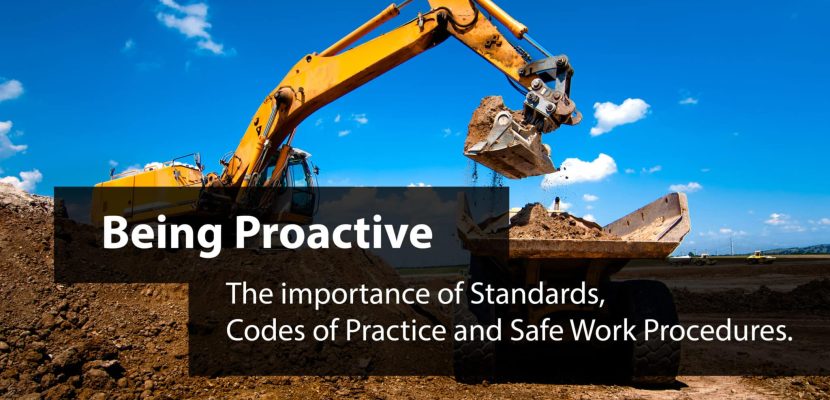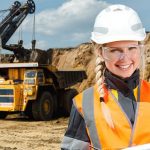Written by Gabrielle Condon – WHS Consultant for CC Safety (ccsafety.com.au)
A decade ago, I had my very first fulltime role as a contracting Safety Officer in a high-risk work environment, working amongst many different contracting companies on a coal mine for a Coal Handling Processing Plant (CHPP) construction project.
I “cut my teeth” in the Safety Industry amongst massive cranes, up to 5 tonne concrete blocks passing nearby, expertly rigged onto those cranes, with hard barricades around the drop and swing zone. I worked amongst many, many dozens of skilled tradies and work crews toiling long hours to complete this project. They ranged from high and low voltage electrical trades, mechanical and metal engineers, concreters, frame and reinforcement workers, scaffolders, crane operators, riggers, dogmen, EWP operators, forklift and reach-stacker operators, excavator operators, earth movers, drillers, surveyors, explosive experts, conveyor belt teams, specialist industrial tilers for the massive coal wash, industrial poly pipe installers, fresh faced 2nd year apprentices, and wide-eyed young and old-hand trades’ assistants watched closely by their mentors.
All this construction work took place right next to the operating coal mine with a hive of activity from dozens of monster coal-hauling trucks, dozers, graders, smaller articulated “moxy” trucks, water trucks and maintenance crews navigating by this very busy work site. I was in awe of the sheer size of the earth moving and lifting equipment, and it was a dream come true from my youth growing up on farms amongst tractors, trucks, small bulldozers and diggers, to see such incredible engineering “masterpieces” and enormous earth moving and lifting equipment in action.

This highly active and dangerous environment showed me the very real importance of positive communications amongst workers and different teams as well as following the tried and true Safe Work Procedures and Risk Assessment and Hazard Control tools that were expected of all of us working on site. This job taught me the high-end management of risk, the absolute imperative obligation to listen to the lessons of the past, to follow standards, codes of practice guidelines, and safe work procedures. From the past consultations and discussions of incidents, and near-hits or misses have been developed best practice instructions for staying safe and getting the job done right. This construction project ran like a well-oiled machine and it was in no small part due to the workgroups following expected processes and procedures for all contractors and employees alike. The processes and procedures and plans created from Standards which encompassed safety legislation, environmental and heritage protection regulations and Australian Quality Standards.
I learned a great deal from that one work project, and had firsthand experience with risks, hazards and the hierarchy of control, to either ELIMINATE the hazard altogether, or if not possible, to minimise the harm and the potential risk through different tiers of control being to: SUBSTITUTE the harmful action or item with a less hazardous solution, ISOLATE the problem from causing harm to people or infrastructure with barriers, ENGINEER the issue with solutions like Australian Standard approved guards on moving parts, ADMINISTRATE a solution meaning to use methods like shorter exposure times for workers per shift, or rotating jobs, and the lowest tier being PPE (Personal Protective Equipment) which also should be used as an extra layer of protection whilst implementing any of the other controls. PPE includes hard hats, hearing, eye and hand protection, full face masks, welding masks, steel capped boots, safety harnesses for working at heights protection, dust masks and breathing apparatus where required, particularly in confined spaces.

On high risk worksites there are many hazards which are controlled under legislation as well as outlined in standards and guidelines and these include compliance checks and good record keeping, communication and management of “out of order” items particularly for electrical equipment, safety harnesses and rigging equipment. There is the absolute requirement for test and tagging and correct usage of equipment made for the job, thorough and accurate record keeping, and to watch out for your work mates as well as yourself.
So if you ever wonder what the point is of a piece of paper telling you how to assess risks or how to control hazards, they are lessons from the past, and it is wise to listen up, be collaborative, be consultative, speak up if you see hazards, share your observations, be proactive in planning the job, assessing the risks, controlling the hazards and you and your work mates will go home safe.
Author: Gabrielle Condon WHS Consultant
www.ccsafety.com.au






